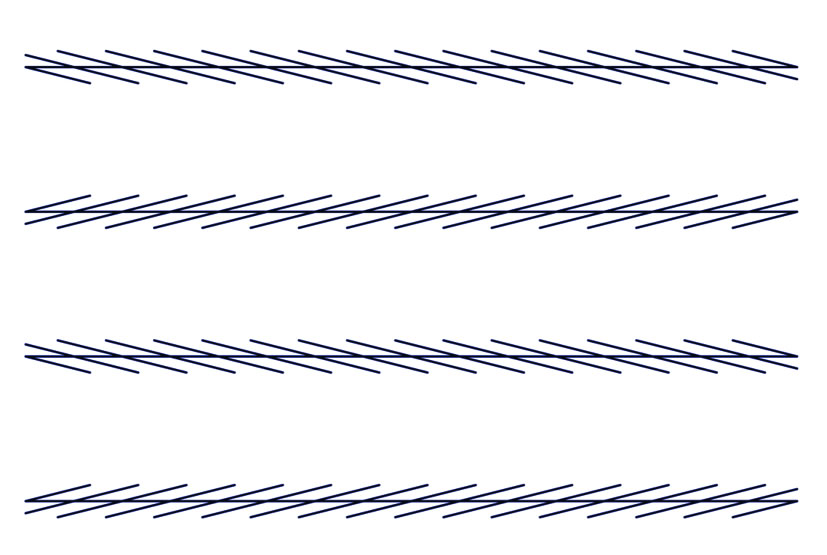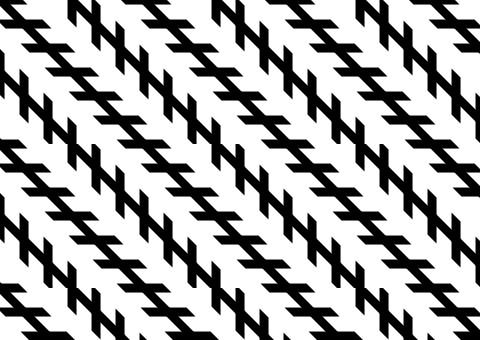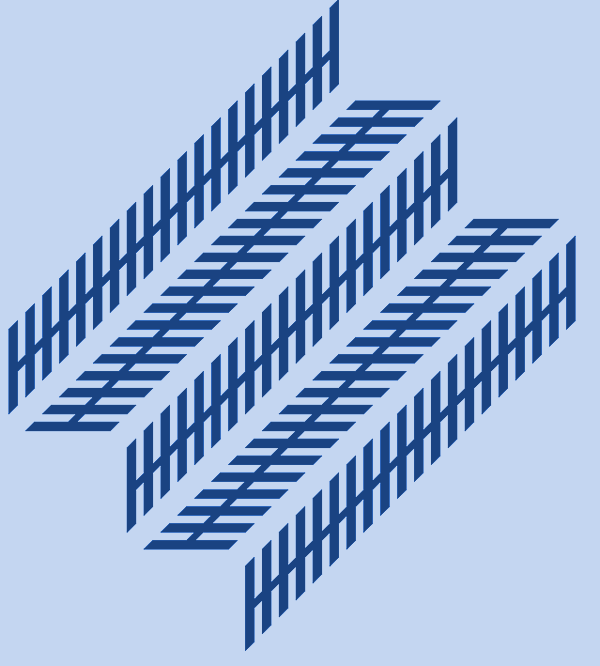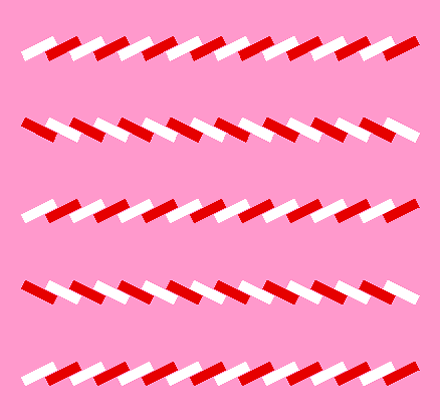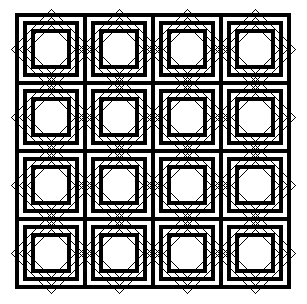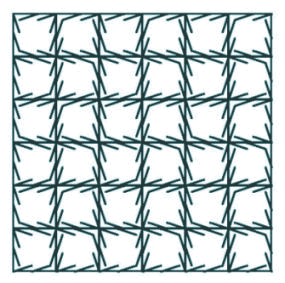| |
|
The
Zöllner illusion
(Parallel Lines illusion) |
|
Johann
Karl Friedrich Zöllner
(8 November 1834, Berlin – 25 April 1882, Leipzig)
was a German astrophysicist who studied optical illusions.
He was also an early psychical investigator.
From
1872 he held the chair of astrophysics at Leipzig University.
He wrote numerous papers on photometry and spectrum analysis in
Poggendorff's Annalen and Berichte der k. sächsischen Gesellschaft
der Wissenschaften, two works on celestial photometry (Grundzüge
einer allgemeinen Photometrie des Himmels, Berlin, 1861, 4to,
and Photometrische Unterstuchungen, Leipzig, 1865, 8vo), and a
curious book, Ueber die Natur der Cometen (Leipzig, 1872, 3rd
ed. 1883). He discovered the Zöllner illusion where lines
that are parallel appear diagonal. He also successfully proved
Christian Doppler's theory on the effect of motion of the color
of stars, and the resulting shift of absorption lines, via the
invention of a very sensitive spectroscope which he named "Reversionspectroscope".
He had shown also that the red-shift was in addition caused by
variation in the stars' lights intensities with the help of his
"Astrophotometer". He made the first measurement of
the Sun's apparent magnitude. His result was very good, less than
0.1 from the modern value. The lunar crater Zöllner is named
in his honor. |
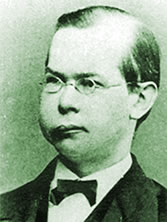 Johann
Karl Friedrich Zöllner
Johann
Karl Friedrich Zöllner |
|

Basic
drawing Zollner illusion |
Description
of the Zollner illusion 1860
The Zollner figure is composed of
a series of parallel, diagonal lines intersected by a
number of short horizontal and vertical bars. The parallel
lines appear not to be parallel at all; rather, they appear
to converge and diverge from each other.
Explanation
While
the exact mechanisms that cause the Zollner illusion are
not fully understood by scientists, it is possible that
the effect can be attributed to the way the brain processes
angles. This theory suggests that the brain exaggerates
acute angles and underestimates obtuse angles. The brain
then adjusts the angles on the transverse lines to create
the illusion that the longer lines are slanted. This hypothesis
is supported by the fact that the illusion is most powerful
at an angle, as perfectly horizontal and vertical lines
are more likely to be interpreted correctly.
Alternatively, the illusion may be caused by an impression
of depth. The fact that shorter lines are on an angle
to the longer lines may help to create the impression
that one end of the longer lines is nearer to the viewer
than the other end.
|
|
|
|
| Basic
pattern of the Zollner illusion
The
horizontal lines are parallel but appear to tilt alternately, i.e., the
acute angles formed by the horizontal lines and the short inducing lines
appear to expand. It is said that the illusion is maximum when the intersecting
angle is 10 - 30 deg. Some references claimed that any angle from 0 deg
to 90 deg gives this illusion, but this was not supported by other references.
The Fraser
illusion is involved between 0 deg and 10 deg, while the "indirect
effect" takes part between 50 deg and 90 deg; both are characterized
by the acute-angle contraction. The oblique arrangement increases illusion.
Kitaoka and Ishihara (2000) showed evidence that the Zollner illusion is
formed by three elemental illusions: two are acute-angle expansion illusions
and the other is an acute-angle contraction illusion. One of the expansion
illusions is of a local type while the rest are of global types.
www.psy.ritsumei.ac.jp
|
|
| The
long
lines are parallel, but they appear to be inclined
|
The
Zöllner illusion is a classic optical illusion named after its discoverer,
German astrophysicist Johann Karl Friedrich Zöllner.
In 1860, Zöllner sent his discovery in a letter to physicist and scholar
Johann Christian Poggendorff, editor of Annalen der Physik und Chemie, who
subsequently discovered the related Poggendorff
illusion, in the original drawing of Zöllner. |
|
|
| Steps?
|
| |
| |
| VARIANTS
OF THE ILLUSIONS of Zoellner in the interpretation by Akioshi Kitaoka
©
Akiyoshi Kitaoka |
|
In
this picture you can see also the illusion of movement |
|
| |
Optical
Illusions REFERENCES:
• Gregory,
Richard L. 1997. Eye and Brain. Princeton University Press.
• Ninio,
Jacques. 2001. The Science of Illusions. Cornell University Press.
• Pohl,
Rudiger. 2005. Cognitive Illusions: A Handbook on Fallacies and Biases
in Thinking, Judgment and Memory. Psychology Press.
• Robinson,
J.O. 1998. The Psychology of Visual Illusion. Dover Publications.
• Seckel,
Al. 2006. Optical Illusions: The Science of Visual Perception. Firefly
Books.
• Kitaoka,
A. and Ishihara, M. (2000). Three elemental illusions determine the
Zollner illusion. Perception & Psychophysics, 62, 569-575.
• Photometrische
Untersuchungen, "Annalen der Physik und Chemie", 1857, Bd
100, 1860, Bd 109 |
|
| |
|
| |
|
| |
|
| |
|
|
|
Copyright
© 2004 ABC-people.com
Design and conception BeStudio © 2016 |
|
|
|

